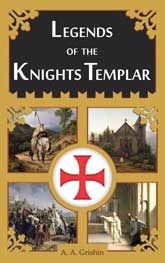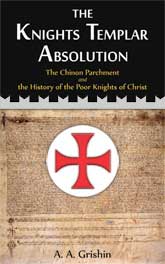
Need a good proof for the fact that Masonic Templarism that became so prominent in the 19th century is in no way connected to the original Order of the Knights Templar? Here it is.
Templar Freemasonry amongst its various symbols uses what is termed abacus – a wooden staff of office. You will spend countless unfruitful hours trying to find a single dictionary where this word is defined in a suitable sense. It just so happens that the originator of this most solemn Masonic term was none other than Sir Walter Scott. In his novel Ivanhoe, which features a rather unsavory Templar Knight character, we find this passage:
In his hand he bore that singular abacus, or staff of office, with which Templars are usually represented, having at the upper end a round plate, on which was engraved the cross of the Order, inscribed within a circle or orle, as heralds term it.
Abacus, of course, is a primitive computational device. As any Latinist should know the word for ‘staff’ in Latin is ‘baculus’. This is, in fact the word used by the Knights Templar in their documents to describe the Grand Master’s staff. The similarity of ‘abacus’ and ‘baculus’, coupled perhaps with the fact that a diminutive of ‘abacus’ would be ‘abaculus’ we may suppose a possible chain of events that took place in the novelist’s mind: “a baculus” – “abaculus” – “abacus”. But that’s really not all that important.
The important question is:
How would it be possible for a group that claims to have descended from the medieval Order of the Knights Templar to use Walter Scott’s novel for inspiration and freely borrow the author’s clearly misplaced term? If Masonic Templars were unable to get one single word right, being so influenced by Walter Scott’s usage, how on earth could they possess a single morsel of the Knights Templars’ spiritual tradition (provided such a tradition really existed at some point)?


4 comments… add one
This argument is very thin. Read “Rosslyn” by Tim Wallace-Murphy and Marilyn Hopkins. It sheds much light on the Templars migration to Scotland and their underground activities after the arrests in France.
I must respectfully disagree. This argument is a very valid one. Terminology is not the most difficult thing to preserve. If a particular object is used and revered for generations it must have a name, and that name should not be changed to something else just because some novellist forgot his grammar school Latin. On the other hand, if someone is trying to manufacture a tradition, they will be using bits and pieces from all kinds of sources, readily taking them at face value. The problem with this individual bit of knowledge is that it simply does not pass muster, so the whole “tradition” is invalidated. No theory based on circumstantial evidence is likely to rescue it.
Howdy! Do you use Twitter? I’d like to follow you if that would be ok.
I’m definitely enjoying your blog and look forward to new posts.
Sure thing:
https://twitter.com/TemplarVault